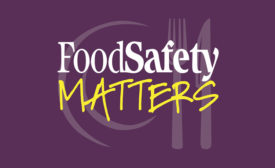Home » PFAS
Articles Tagged with ''PFAS''
PFAS in Food Packaging: What You Need To Know
FDA's and EPA's regulation of PFAS is developing, and it is an important consideration for food producers and packagers
February 13, 2025
Upcoming EPA Deadline to Disclose PFAS Use Means Likely Surge in Litigation for Food Industry
Reports to EPA by PFAS manufacturers and importers are likely to lead to a major increase in new consumer claims
February 12, 2025
Never miss the latest news and trends driving the food safety industry
eNewsletter | Website | eMagazine
JOIN TODAY!Copyright ©2025. All Rights Reserved BNP Media.
Design, CMS, Hosting & Web Development :: ePublishing











